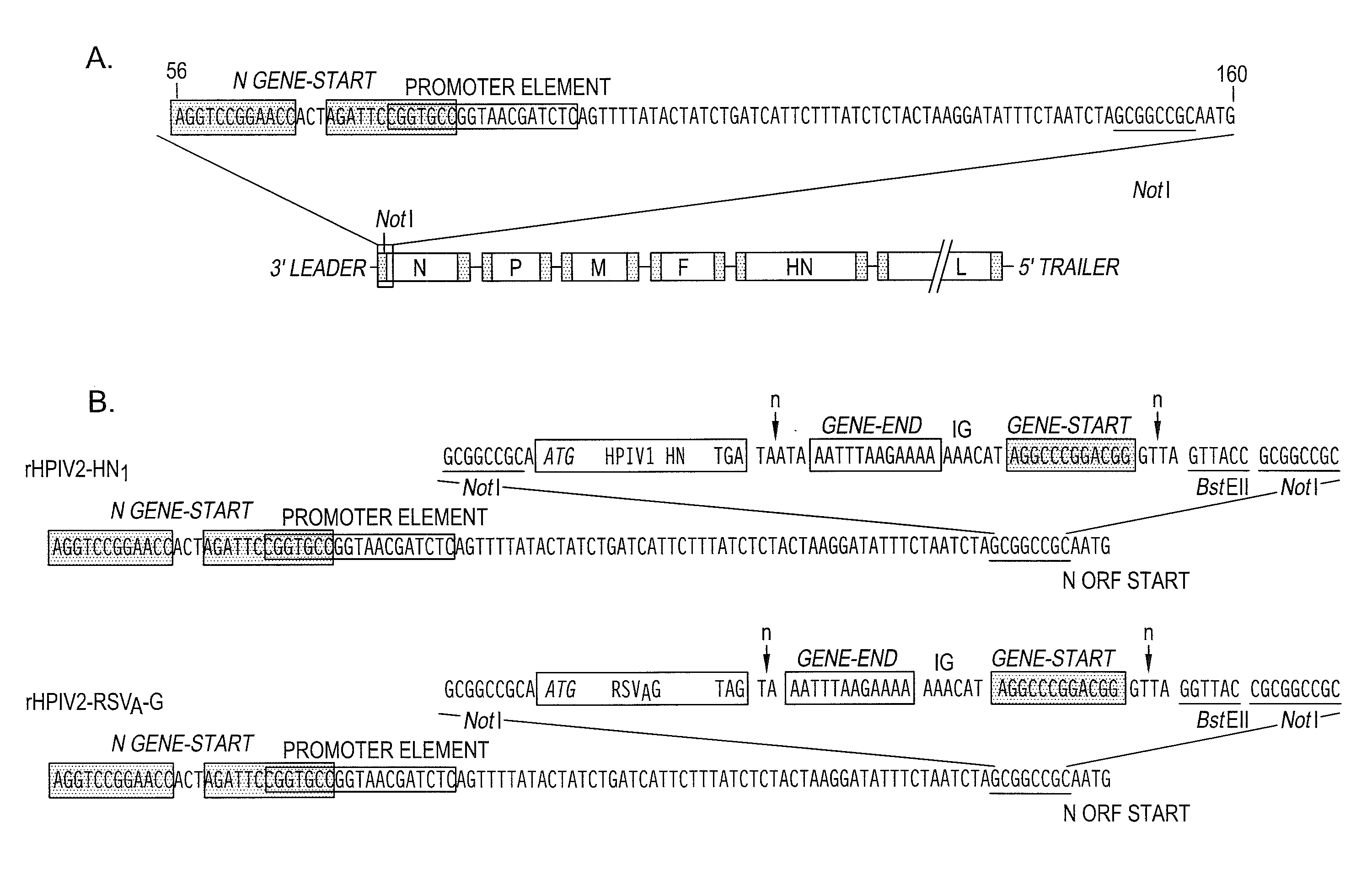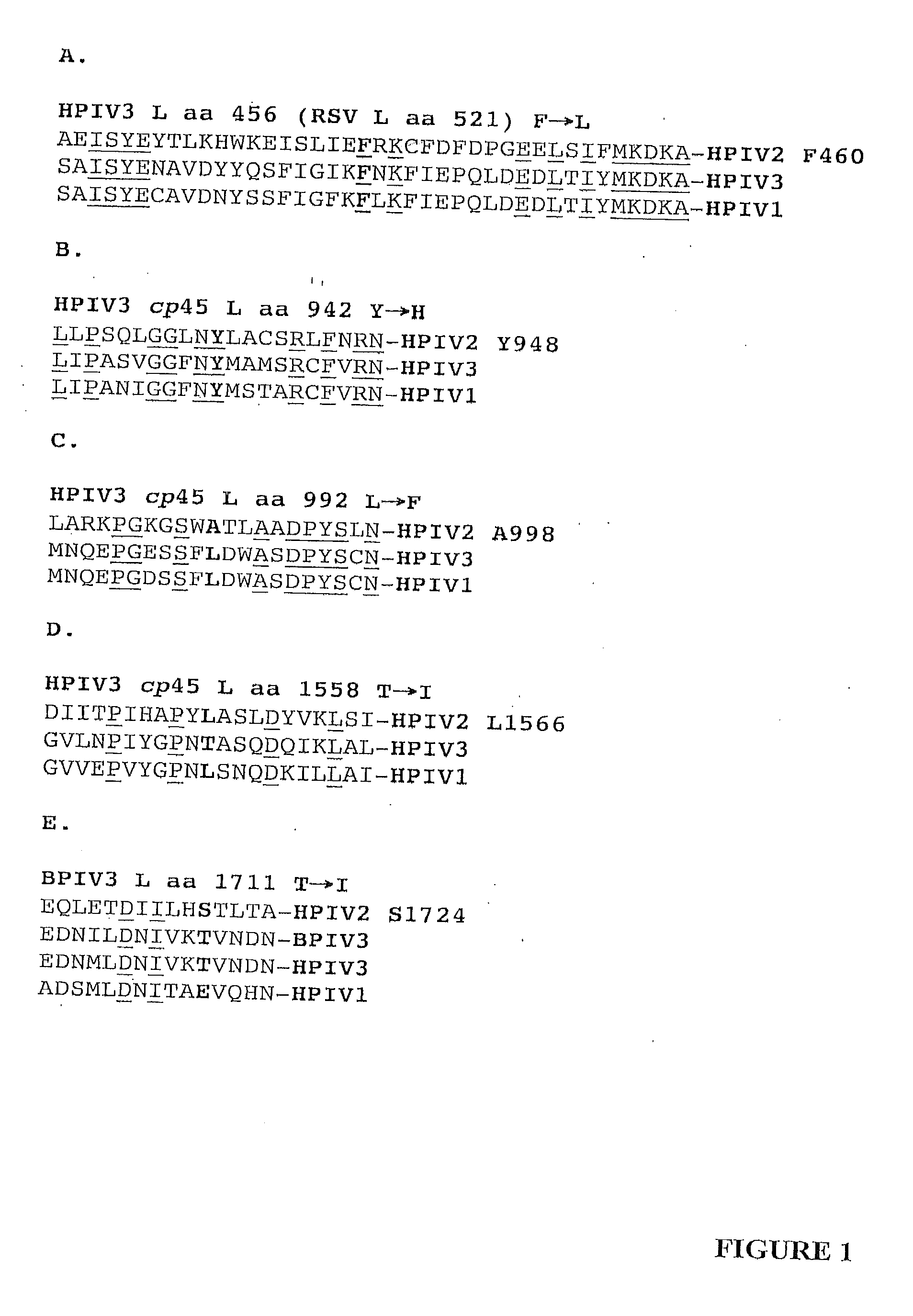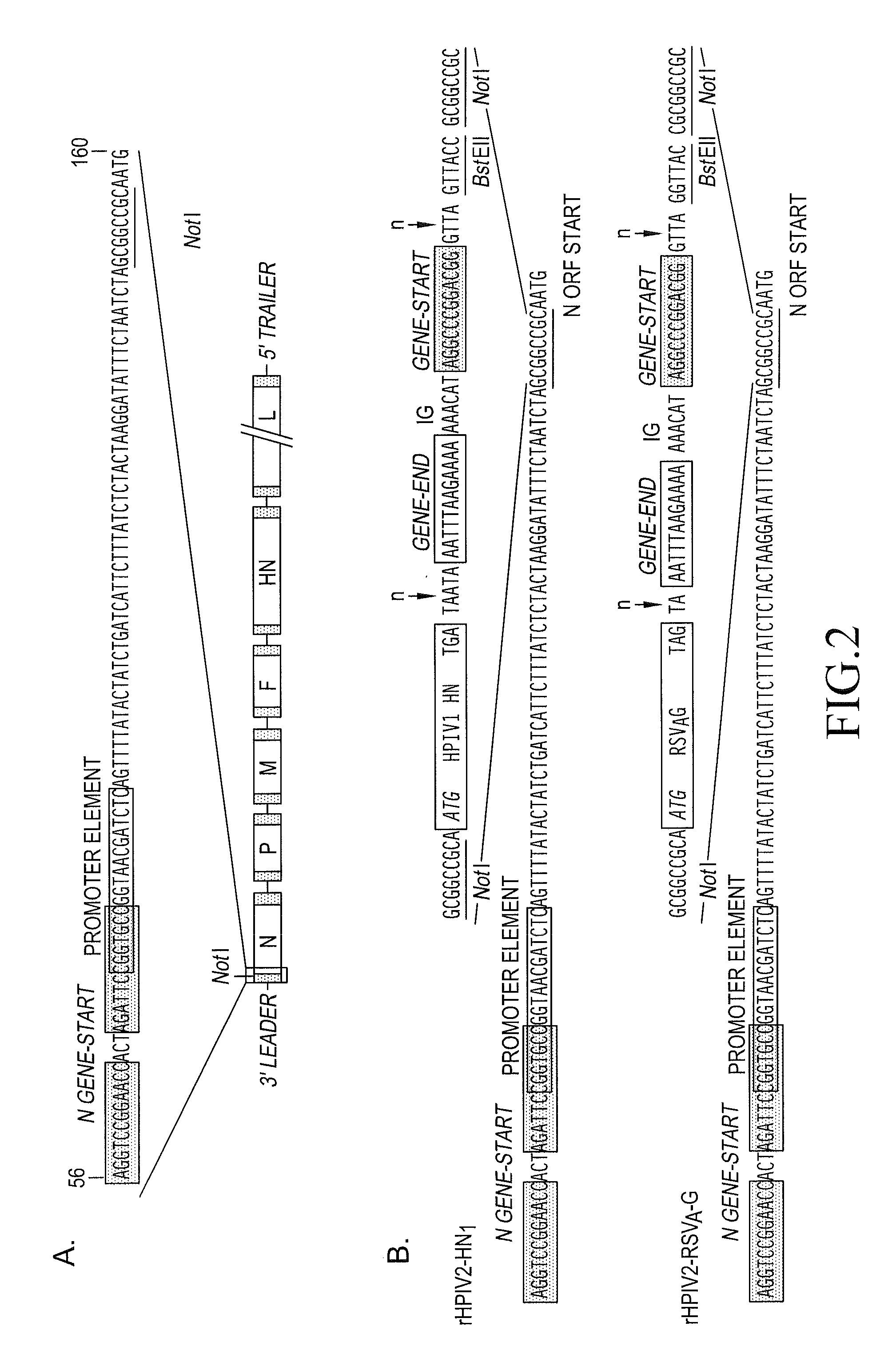RECOVERY OF RECOMBINANT HUMAN PARAINFLUENZA VIRUS TYPE 2 (HPIV2) FROM cDNA AND USE OF RECOMBINANT HPIV2 IN IMMUNOGENIC COMPOSITIONS AND AS VECTORS TO ELICIT IMMUNE RESPONSES AGAINST PIV AND OTHER HUMAN PATHOGENS
- Summary
- Abstract
- Description
- Claims
- Application Information
AI Technical Summary
Benefits of technology
Problems solved by technology
Method used
Image
Examples
example i
Sequence Determination of Human Parainfluenza Virus Type 2 (HPIV2) and Generation of a Recombinant Wild Type HPIV2 from Cloned DNA
[0197]The present Example demonstrates complete genomic sequence determination of a human parainfluenza virus type 2 (HPIV2) virus that can be directly recovered, without modification into recombinantly derived HPIV2. The subject viral strain for this analysis is Vanderbilt / 1994 (V94), which was originally isolated in 1994 from an infected 13 month-old infant. The HPIV2 / V94 genome is shown herein to be 15,654 nucleotides in length and, therefore, to conform to the “rule of six”. This rule relates to the observation that efficient RNA replication by members of subfamily Paramyxovirinae, family Paramyxoviridae, requires a genome nucleotide length that is evenly divisible by six (Kolakofsky et al., J. Virol. 72:891-9, 1998, incorporated herein by reference).
[0198]The determination of a complete wt HPIV2 sequence disclosed herein allows the generation of cDNA...
example ii
Replication of Recombinant HPIV2 In Vitro
[0221]The mean peak titer of recombinant and biologically derived HPIV2 was determined by multi-cycle growth titrations. Each HPIV2 tested was inoculated in triplicate into LLC-MK2 monolayers in 6-well plates at a multiplicity of infection (m.o.i.) of 0.01, and cultures were incubated at 32° C. with and without porcine derived trypsin added to the culture medium, as described previously (16). 0.5 ml of medium from each well was harvested and replaced with 0.5 ml of fresh medium at 0 hr and at 1 to 7 days post-infection. Virus present in the samples was quantified by titration on LLC-MK2 monolayers in 96-well plates that were incubated for seven days at 32° C. Virus was detected by hemadsorption and is reported as log10 TCID50 / ml (50% tissue culture infectious dose / ml).
[0222]The growth properties in cell culture of rHPIV2 / V94 recovered from cDNA were indistinguishable from that of the biologically derived HPIV2 / V94 (FIG. 4), and growth in vitr...
example iii
Replication of rHPIV2 / V94 and Biologically Derived Wild Type HPIV2 / V94 in Hamsters
[0223]4 week-old Golden Syrian hamsters (Charles River Laboratories, NY), in groups of 6 were inoculated intranasally (IN) with 0.1 ml of L15 medium containing 106° TCID50 of virus. On day 3, 4 or 5 post-infection, the lungs and nasal turbinates were harvested, and the virus was quantified by serial dilution of tissue homogenates on LLC-MK2 monolayers, as previously described (Skiadopoulos et al., J. Virol. 72:1762-8, 1998, incorporated herein by reference). The mean virus titer was calculated for each group of hamsters and is expressed as log10 TCID50 / gram of tissue.
[0224]The replication of rHPIV2 / V94 in the respiratory tract of hamsters was compared to that of the biologically derived HPIV2 / V94 to determine whether the recovered rHPIV2 / V94 retained the replicative properties of its biological parent in vivo. In this regard, hamsters are accepted in the art as a useful animal model of HPIV infection i...
PUM
| Property | Measurement | Unit |
|---|---|---|
| Temperature | aaaaa | aaaaa |
| Temperature | aaaaa | aaaaa |
| Temperature | aaaaa | aaaaa |
Abstract
Description
Claims
Application Information
 Login to View More
Login to View More - R&D
- Intellectual Property
- Life Sciences
- Materials
- Tech Scout
- Unparalleled Data Quality
- Higher Quality Content
- 60% Fewer Hallucinations
Browse by: Latest US Patents, China's latest patents, Technical Efficacy Thesaurus, Application Domain, Technology Topic, Popular Technical Reports.
© 2025 PatSnap. All rights reserved.Legal|Privacy policy|Modern Slavery Act Transparency Statement|Sitemap|About US| Contact US: help@patsnap.com



